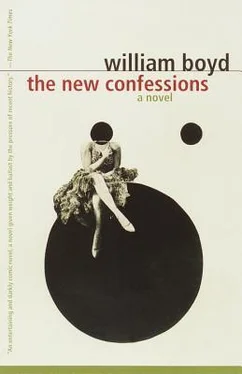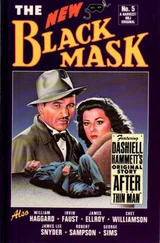In those days—1927—Annecy was not the fashionable resort it was to become, but I found it a delightful place, with its spectacular view of the blue lake and its ring of mountains. I loved the old town with its canals and arcaded streets, and the way the castle dominated so many of one’s images of the place reminded me vaguely of Edinburgh. I thought of Jean Jacques here, aged sixteen, arriving at the crucial nexus of his life, walking these narrow lanes.… Even the cathedral, which the guidebooks describe as “a poor Gothic building,” holds a precise and particular charm. Jean Jacques had sung as a chorister here and his voice had echoed beneath this indifferent vaulting.
Somehow, Leo had managed to find accommodation for all of us, but in separate hotels scattered about the town. We went to work straightaway on establishing shots, clearing streets of modern accouterments, hiring locals as extras. For two enchanting days we sailed the small lake in a jolly saloon steamer, with its own restaurant, filming the gently sloping orchards and meadows on the shore and the careless mountains above. The setting, the weather and the clean air all had a suitable Rousseauistic effect on us. That first visit to Annecy was the happiest filming experience of my life. We worked in harmony and with a curious serene efficiency. I was able to send reassuring cables to Aram/Eddie in Berlin. All was well — except for me.
Rousseau had fled from his unhappy apprenticeship in Geneva (we were to film this later) and gone to Savoy — then an independent duchy and a frequent sanctuary for exiles and apostates from Calvinism, who were received with sacred glee by proselytizing priests as political converts to Catholicism. Initially an old curé entertained the young Jean Jacques for a few days and then sent him on to Annecy with a letter of introduction to a Swiss baroness, herself a recent convert, who often gave shelter and succor to Protestant refugees.
We had some trouble with Karl-Heinz, who patently did not look sixteen. We provided him with a longish dark wig — shoulder length — with a rough fringe, and this made him look strangely but suitably boyish. Annecy, in 1728, was a kind of convert center — busy and vital, well populated by exiles and attendant nuns and priests. That street scene twenty minutes into the film was one of my best-ever manipulations of a crowd and the first in which I used a mobile camera to its full effect. I had a camera and tripod bolted to a small wheeled cart, which was pulled by a couple of strong lads. We start the scene in close-up on the clashing bells of a church tower, pull back and pan down to Jean Jacques’s face looking up at them. Then the camera begins to move away and we see him push uncertainly through the throng of urchins, citizens, priests, soldiers and nuns. The camera appears to move effortlessly through the crisscrossing bodies, as if it were an invisible presence, then weaves sinuously through the arcades as Jean Jacques, clutching his letter of introduction, makes his hesitant way towards the “terrifying audience” with Mme. de Warens.
It took me five days to shoot this scene. I admit I prolonged it unduly in order to delay and heighten Doon’s first appearance in the film, but the crew were used by now to my near-fanatical desire for perfection and no one guessed at my real motive. I had extras recostumed, buildings repainted. I even moved a line of six cypress trees fifty yards along the skyline to aid the composition of a single shot. But finally I could postpone it no longer — Doon herself was growing impatient. We had been two weeks in Annecy and she had done nothing but rehearse.
We had discovered a spot almost identical to the site of Mme. de Warens’s original house (later demolished, would you believe, to make room for a new police commissariat!). In his Confessions , Jean Jacques relates how he called on her there only to be informed that she had just left for mass. She had a private door into the nearby church, which she reached by a small passageway, bounded on one side by a garden wall and on the other by a stream. It was here that Jean Jacques caught up with her just as she was about to enter the church. He called her name, she turned and — as he puts it—“in that moment I was hers.”
I did not sleep the night before we were due to film the scene. How to encapsulate that instant, those boiling, tremulous seconds when your love detonates for another person? I thought back, naturally, to that meeting in the Metropol bar in Berlin. How banal, how humdrum the setting — an empty cocktail bar in a fancy hotel! How doltishly inept my first words.… How could I invest the meeting of Jean Jacques and his Maman with everything I felt for Doon? There was no possibility of doing so, of course. Music would help; so would my editing of the images and the veracity of the expressions on the actors’ faces. I even had my own lens: the Todd Soft-Focus Lens — a lanolin gel of exceptional clarity held between two plates of glass, which did not cloud or blur so much as give faces a luminous powdery beauty. (I took the precaution of patenting this in both Europe and the U.S.A.: royalties from it later provided a vital financial mainstay.) With luck and hard work we could make it look wonderful, but I could never reproduce my emotions.
Baroness Mme, de Warens. Louise Éléonore. No authenticated portraits exist, but she comes to life in Jean Jacques’s loving description. She was twenty-eight years old when they met. He was sixteen. She had abandoned home and husband for the Catholic religion, but in her life religious devotion and erotic yearnings often overlapped. She was an efficent proselytizer. Significantly, her converts were all young men who lived in her apartments as they underwent instruction. “She had a caressing and tender air,” Jean Jacques says, “a very soft gaze, an angelic smile and plentiful ash-blonde hair of exceptional beauty worn in a casual unaffected negligence that increased her attraction. She was small in stature and a little plump, but it would be impossible to find a lovelier head or more beautiful bosom, or more graceful hands and arms.”
Doon’s height was inaccurate, but I felt the hair was a remarkable coincidence. Her hair was longer now than it had been in Julie , but we had several wigs made in the casual style described by Rousseau and in them she looked incredibly beguiling. I dressed her in a jade-green gown, quite décolleté, with a transparent silk scarf thrown across her throat and cleavage. Whether anyone would have gone to church like that in 1728 I did not know or care — the realism I sought here was emotional and not to do with any pedantic accuracy of historical costume.
We filmed the meeting scene in the late afternoon when the light was soft and glowing and the shadows long. Technical problems managed to distract me from my own breathless emotions, though I still felt, throughout the entire day, that someone had wedged a matchbox down my throat, I kept massaging my windpipe, coughing and gulping air. At one moment I took the place of my cameraman — Horst Immelman — behind the camera. I reserved for myself the shooting of Doon’s close-ups as she reacted to Jean Jacques’s call … Doon’s face as she turned to gaze into the lens: piety — shading to surprise, to stirring curiosity. It was almost too much for me to bear. The pure curve of her jaw, neck and throat set against the dark grain of the iron-studded church door was a masterful, tense counterposition. The sheen of translucent silk over her round shadowed breasts, their barely perceptible heave and subsidence as she breathed, the subtle shifts of their pale contours, represented the very apex of discreet but fervent emotion. And then I made her walk towards Jean Jacques. Her full length was held in the frame of the lens as the camera retreated before her on its trundling dolly. I sat behind it — protected by it — and watched that particular stalking stride, and I was back that day in the Metropol Hotel as she came towards me across the thick carpets and the glossy parquet, through the groups of leather armchairs, her thighs brushing their round backs as she weaved by. Her long, muscled swimmer’s legs. Those curious, endearing, slightly splayed, slightly too large feet in their impossible dancer’s shoes …
Читать дальше












